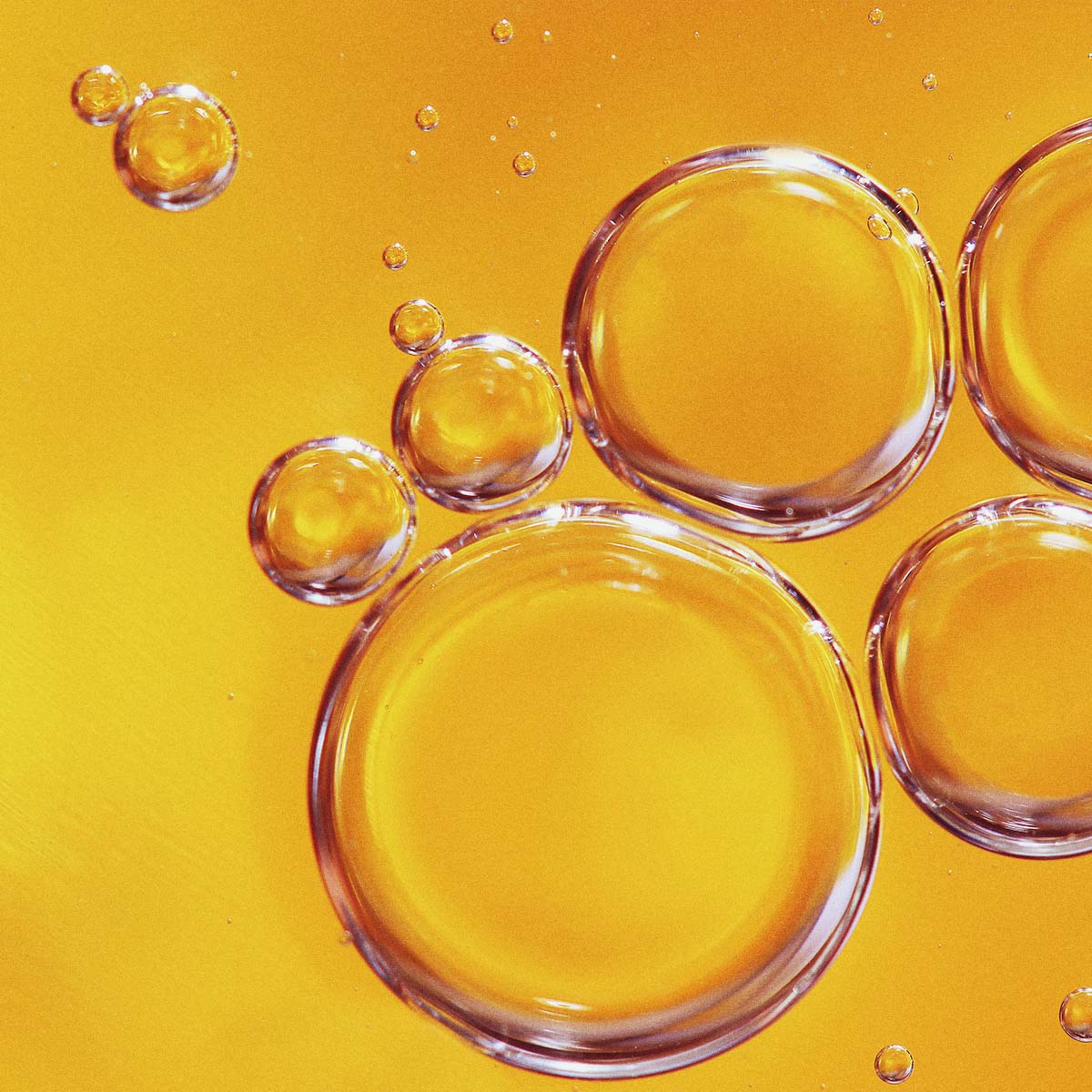Part 4 of the "What's in it is what's good. For you and your skin" series from This Place.
Would you like to better understand the ingredient list of your cosmetics? The series of articles "What's in it is what's good. For you and your skin" by This Place will help you with that.
The first article is about bakuchiol, a plant that has only recently been celebrated as a hero ingredient. You can access the other articles via the links at the bottom of the page.
Hardly any other ingredient seems more fitting for a cup of tea than this one: Camellia. Or more precisely: camellia seed oil.
What has so far been associated with a beautiful ornamental plant in German gardens and living rooms is attracting more and more attention in the field of cosmetics, medicine and food in this country as well.
After reading the following article on camellias and their seed oil, you will understand why this species-rich plant has not been an insider tip in Asian countries for 2000 years [6], but a firmly established beauty and healing remedy. And this in more aspects than you might now suspect!
In this article you will learn
- What camellias are,
- how camellia seed oil is extracted,
- what effect camellia seed oil has on your skin and
- more about the further use of camellia oil.
Camellias: What you need to know about the beauty plant from Asia
It is one that knows how to fascinate: the camellia.
To learn more about this hero ingredient in The Glow and The Glow Naked face creams, we're going on a journey together – through history and halfway around the globe. Ready?
Camellias - on the distribution and history of the beauty plant
The importance of the camellia plant genus with its approximately 200 species [2] - according to some sources even 300 species [cf. [8] - in Asian culture can probably only be grasped in rudimentary form. But it is certainly worth a try!
Basically, all camellia species belong to the tea shrubs. Camellias grow and thrive naturally in India, Nepal, Thailand, South Korea, Vietnam, Indonesia, southern Japan and southern China.
The fact that individual species have found their way to Europe is due, among other things, to the eponym and Swedish naturalist Carl von Linné. He named the plant, which blooms evergreen especially in East Asia, after a respected fellow researcher, Georg Joseph Kamel.
In the course of his research efforts, Linné recorded, categorised and studied the camellia like many other plants in his career.
But by the time botanical knowledge of the plant had reached Europe thanks to Linné's work, camellias already looked back on a much longer tradition in the history of China alone!
For example, the "Compendium of Materia Medica", written during the Ming Dynasty (from 1368 to 1644), shows what Chinese medical and naturopathic scholars used camellia oleifera, i.e. camellia seed oil or camellia oil, for.
Camellia seed oil was used, among other things, as a medicine to treat abdominal pain, burns and even for regeneration after pregnancy.
But the uses that have endured to this day are much more wide-ranging. The oil of some camellias is said to help internally or externally with
- nosebleeds
- gangrene (dying tissue, for example due to circulatory problems)
- itchy skin ulcers
- kidney inflammation/li>
- various swellings and
- suspected poisoning.
Although there are only a few hundred species of camellia, four often stand out in terms of use as cosmetics, medicine and food.
These include
- Camellia oleifera and Camellia sasanqua (e.g. for the extraction of edible oil from camellias and more and more as an ingredient of caring cosmetics)
- Camellia japonica (among other things for use as a cosmetic with the name Tsubaki oil)
- and with the subspecies of Camellia sinensis the tea plant, from which the hot beverage tea is obtained in different varieties.
Camellia oleifera alone has been cultivated for over 2000 years [6]. The robustness of these plants is shown by reports that individual camellias in China are said to be more than 1000 years old [8].
Some plants of the tea familiy Theaceae grow up to 20 m high and bear flowers mainly in white, red or yellow. The seeds are often spherical or hemispherical. However, there are even slightly angular and flat seed varieties.
Camellia seed oil: How the valuable oil is produced
According to current research, camellia seed oil from Camellia oleifera contains about 250 different compounds [6], including
- Antioxidants such as squalen and carotenoids (radical scavengers that protect your body from oxidative stress)
- Flavonoids (natural colouring agents)
- Polyphenols (fragrances and flavours that can have a positive effect on human health and the immune system) and
- other minerals and vitamins.
Of particular interest for your health and nutrition is the unique composition of fatty acids, which gave camellia oil the nickname "Eastern olive oil" [6]. Because it is rich in monounsaturated fatty acids such as oleic acid, linoleic acid and stearic acid, camellia seed oil is a popular cooking oil, not least in the kitchens of China.
Many of the compounds, for example antioxidants, minerals, vitamins, oleic acids and polyphenols, react sensitively to heat, which is why the oil is cold pressed.
As the name camellia seed oil suggests, the oil is mainly extracted from the seeds of Camellia oleifera. Which is also partly from the genus Camellia sasanqua. In essence, all parts of the plant can be used to obtain oil, among other things.
The seeds ripen surrounded by flowers. For the production of camellia seed oil, the seeds are removed from the blossoms, peeled, dried, crushed and then gently pressed.
The oil is very viscous, colourless, and odourless in its unprocessed state after cold pressing.
Beauty elixir from East Asia: What effect does camellia seed oil have on your skin?
Camellia seed oil is one of the hero ingredients in our formulations of The Glow and The Glow Naked.
When you look at the effects that the ingredient is said to have, you will quickly realise how much power can be contained in just one ingredient according to research and studies [3; 4; 6; 7].
According to this, Camellia oleifera has the following properties:
- antioxidant
- anti-inflammatory
- analgesic
- antimicrobial
- protects nerves and blood vessels
- anti-canceras the seed oil inhibits for example the growth of tumours (However, according to research, this applies to the ingestion of the oil [6])
Camellia seed oil not only forms a protective film on your skin and thus evens out your complexion. In addition, camellia seed oil is particularly well absorbed, which means that it can have an intensive care effect even on sensitive and irritated skin.
Camellia seed oil is particularly suitable for the care of dry, irritated skin due to its fatty acid profile, among other things.
By the way: Tsubaki oil from camellia japonica was already considered a beauty elixir by geishas, who traditionally used it for hair and skin care. And rightly so, because the collagen-stimulating effect of tsubaki oil on the skin has now been scientifically confirmed [5].
Cutting Edge: camellia seed oil in and out of the kitchen
Besides its use in cosmetics, camellia seed oil is also used to protect particularly valuable knives and blades from corrosion damage. For a more beautiful appearance and to emphasise natural grain patterns, the oil is certainly also applied to wood.
The traditional use as cooking oil, especially in Chinese and Japanese cuisine, is of course primarily due to the fact that the plant has its natural habitat there.
But the real advantage goes much deeper: For example, initial studies have shown that camellia seed oil can protect the liver from fatty degeneration. In traditional medicine, camellia seed oil is also used to treat a variety of diseases of the internal organs. As a highly potent radical scavenger with an anti-tumour effect, the oil also has a positive effect on kidney diseases [4].
Camellia oil, a beauty all-rounder
While it has been valued in East Asia for centuries, if not millennia, for its health-promoting and nurturing properties, in this country the camellia is still more the object of desire of ornamental plant fans.
But more and more, camellia seed oil is being used in cosmetics because of its many positive effects.
In The Glow and The Glow Naked, camellia seed oil provides an intensive care effect. The oil is suitable even for sensitive and irritated skin, not least because of its unique fatty acid composition.
The oil is used in particular in Asian countries as an edible oil. If you are curious, it may be worthwhile to take a look at the oil shelf the next time you are shopping in a specialist shop for Asian food. This way you can use camellia seed oil according to your needs, both internally and externally, for your self-care moments.

